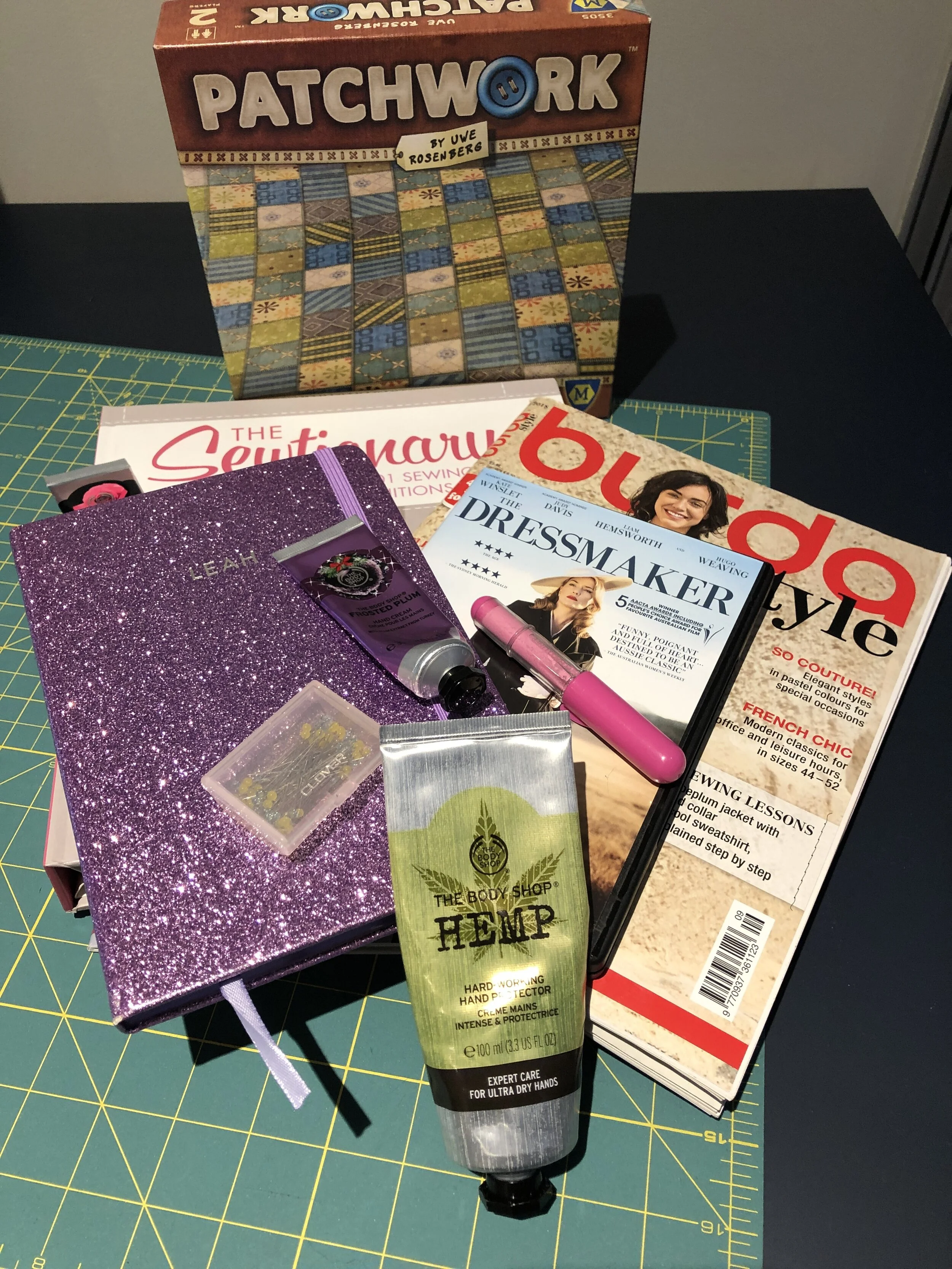Sewing Two Shirts Out of Two Metres of Fabric!
Since I love remnants, and squeezing every last bit of fabric out of them, I challenged myself to make two shirts out of a two metre merino knit remnant I bought at the Fabric Store.
After purchasing the remnant, I pre-washed and shrunk the fabric. For me, I never dry things in the dryer, so I pre-washed the fabric in cold, and hung it to dry. To avoid stretching the fabric, I laid it flat across my drying rack.
While I was in the process of pre-washing the fabric, I chose two low yardage patterns that use knit fabrics. I also chose at least one top that was simple, so that I could add a seam easily. For me, this was Burda #6911 and The Drape Top from Simply Sewing magazine. The Burda top called for 0.9-1.45 metres of fabric (depending on width), and The Drape Top called for 1 metre.
Once my fabric and patterns were ready, I took the most important step: planning the fabric cutting layout. I laid out my fabric, folded in half, as all of the pieces were cut on the fold. Then I started to place the pattern pieces according to the pattern recommendations, and paying close attention to the grainline. As anticipated, I did not have quite enough room for both tops to be cut out.
Not to worry, I had sufficient fabric to stitch together two pieces of fabric, so I could cut out all of the pieces. I chose the back of the simplest pattern, The Drape Top, to add a seam to. The Drape Top is effectively two sides, front and back, stitched together, and then bound at the armholes. So, it was the most logical, and least visible pattern piece to add a seam to.
The added seam on the back of The Drape Top.
To add the seam, I marked the place where I wanted a seam added on the pattern piece, I drew a line across the pattern piece, added my seam allowance, and then transferred this line to my fabric using my chalk pen. That facilitated cutting out the top section of the back piece. After, I used these seam lines as a guide to facilitate transferring the lines, and cutting out the bottom section of the top. I didn’t feel it was necessary to trace the entire top, so I cut the fabric using the pattern for the sides, and then cut along the traced line for the added seam.
The Drape Top & Burda #6911
Before assembling the garment, I sewed the added seam with a straight stitch, as I did not want the seam to have any stretch. I then finished the seam, and assembled the garment as per the pattern instructions. The additional seam is barely visible, and doesn’t detract from the garment.
The Drape Top: A classic top that’s great for scrap busting or remnants!
Burda #6911: A chic twist front top that doesn’t use a lot of fabric!
Photo Credit: Jacob Mckee-Wright
The result was two awesome shirts that I frequently wear to work!
Squeezing two shirts out of two metres of fabric is best done with knit fabrics, as these fabrics generally require less fabric due to their negative ease. (Negative ease is when your garment measurements are smaller than your measurements, resulting in a more fitted garment.) It is possible to use woven fabrics, but generally the patterns for wovens require more fabric to account for their greater ease. A good pattern for wovens, if you want to try this is New Look #6035, as it requires between 1 and 1.2 metres.
New Look #6035; Another classic top, great for work or going out.
Happy Sewing!
Tools That Made This Project Successful:
**Clover Chaco Pen: https://amzn.to/37hNLqs
**Clover Pins: https://amzn.to/37hfbgg
These ones are amazing for delicate fabrics!
Please note, I’ve only included exceptional tools, which really made a difference to the project.
Resources:
Simplicity/Burda/New Look Website: https://www.simplicity.com
Simply Sewing Magazine: http://www.simplysewingmag.com
Sew News, “Sewing With Knits: Understanding Negative Ease”, https://www.sewnews.com/blogs/sewing/2018/05/09/sewing-with-knits-understanding-negative-ease/








